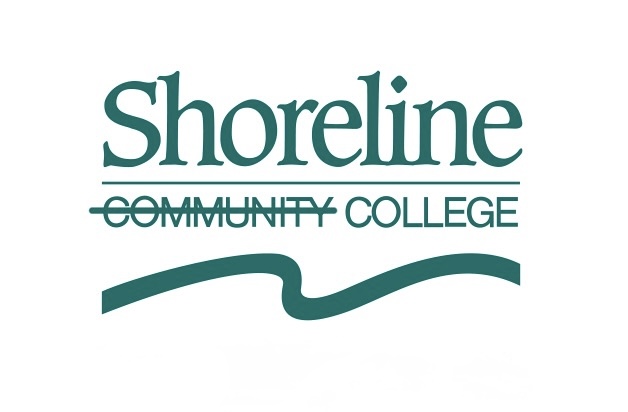A SWEETER ALTERNATIVE TO WAXING
Shaving is one of the worst things someone can do to their body. So, an alternative was found: waxing.
Yes, traditional razor shaves are quick and affordable. However, it isn’t a permanent fix and doesn’t always provide progressive results. Hair grows back quickly — in comparison to alternative hair removal methods — and it’s much more coarse in texture and there’s an even higher chance of ingrown hairs since most people don’t shave in the correct direction.
Although razors aren’t ideal, neither is waxing. If you’re still looking for the same type of procedure similar to waxing, “sugaring” may be the treatment for you.
A number of common hair removal methods date back to ancient Egypt (where most women tweezed their bodies hairless), the Roman Empire (pubic hair was considered “uncivilized”) and even the Middle Ages (people only kept their faces free of hair, not their bodies).
However, most of these methods included homemade razors or seashell tweezers or ammonia-soaked bandages and vinegar — and are certainly not safe for the skin.
What’s the Alternative?
In the modern day, waxing is widely accepted as a suitable quick fix to body hair.
Waxing is a technique that uses resin and tree by-products to remove hair from the root, resulting in much smoother skin and reduced hair growth, according to beinghealthfull.com.
It’s applied in either a hard or soft form. When applied in its “hard” setting, it’s allowed to dry and removed by grabbing the edge of the wax and pulling. As a “soft” application, a wax removal strip is placed on top of smoothed out wax and quickly taken off with the strip.
But, even waxing is beginning to lose popularity.
First off, waxing is fairly painful. Every person has a varying pain tolerance level, but waxing is a quick, not-so-painless experience and even the most stoic may be subject to the surprising shock of sudden hair removal.
Secondly, when applying wax, it isn’t as simple as smoothing the wax in the direction of how your hair grows: forcefully removing hair from the wrong direction can lead to ingrown hairs.
Third, most wax is heated up far too hot and can burn or irritate the skin.
Waxing — whether it’s bikini, Brazilian or any other body part — isn’t always the best alternative to razors.
Other options that aren’t as similar to waxing include threading (a hair removal technique where hair is plucked off with a twisted thread) or store-bought hair removal brands such as Nair (which, no male or female should ever use due to its ability to possibly burn your skin, especially if you have a sensitive outer layer).
What’s the alternative to the alternative then?
The Counter to the Alternative
According to puresugarhb.com, the ancient Egyptians (them again!) were the first people to use a form of sugaring.
The sugar “paste” today consists of sugar, water and lemon and is applied in the direction of how the hair grows naturally, then “flicked” off instead of ripped from the skin.
In the “Journal of Cosmetic Dermatology”, sugar wasn’t readily available and was restricted to Persian regions until around the first millenium AD. Neighboring countries, such as Egypt, took to using honey as the first official “sugaring agent” in lieu of the sweet substance.
Nowadays, the same ingredients are used (no honey, save the bees) and is generally set at room temperature, alleviating the risk of burning the skin.
According to an article on self.com by Emily Rekstis on her own sugaring experience, “sugaring is a gentler experience than traditional waxing.”
Rekstis says she was “overconfident” and booked a waxing appointment, despite being wary of it for years and her friend “raving” about sugaring in general. “After my appointment, waddling to the subway like a slow duck and regretting my hubris, I swore off traditional waxing,” she says. “One strike and I was out; it was sugaring only from here on out.
Dr. Howard Sobel, a dermatologist and certified cosmetic surgeon located in New York City, also said that the paste only attaches to the hair, and not to the skin: “Hot wax attaches to the hair and the skin, pulling skin cells with it as it is removed,” Sobel says. “This is not only painful, but can cause redness, swelling, inflammation and even bruising.”
Gunna Covert, a master esthetician — someone with special training in skin treatments, hair removal and other beauty-related work — who’s also located in New York City at Daphne Studio and Penelope & The Beauty Bar, says that sugar “does not stick to live skin cells, only to the hair and dead skin cells which means less irritation and discomfort.”
In regards to pain: Sugaring does sting, but according to Rekstis, it’s more like “tweezing” versus the ripping burn of wax.
Finally, sugared skin generally lasts around 2-3 weeks. This varies person-to-person, since some individuals can grow hair back faster than others.
However, no matter how quickly it grows back, if the job is done right there will be less hair growing back and it’ll be much thinner with each consecutive appointment.
Choose What Works Best for You
Waxing or sugaring can be intimidating. Whichever you choose, don’t choose or continue to use will have a lasting result on your body. Be sure to do more research if you’re not entirely sure and never force yourself to undergo any hair removal treatment if you are not comfortable.
If you’re a first-timer to either treatment, here’s a few preemptive measures you’d want to take. On most sugaring or waxing websites, estheticians will give a run-down of suggestions like these.
Grow out your hair
Both sugaring and waxing requires a little bit of hair. For the bi-weekly shavers out there, this may be tough, but is necessary for the best results.
Allow up to 4-5 weeks of hair growth before your first appointment. The exact size is between ⅛ inch to ¼ inch long.
Do not shave at all while growing out your hair. It’ll be tempting, but let your body do its thing.
Exfoliate your skin
Exfoliating is the process of removing dead skin cells. It can be done with skin care tools, like a sponge or a towel, or actual scrubs, which comes in liquid or gel forms.
Pre-appointment, exfoliate where you plan on getting hair removed. Do this at least 1-2 days prior to meeting your esthetician, and do not exfoliate or take hot showers until after 24 hours post-appointment.
At this point, your skin will be in a sensitive state. Further irritation or rubbing from exfoliants will be detrimental to the process.
After a full 24 hours, it’s recommended that you gently exfoliate to eradicate any dead skin that hasn’t been removed.
Take a painkiller
It won’t make the pain go away entirely, but it will make it more tolerable. Any over-the-counter painkiller works: ibuprofen, Advil and aspirin. Take 1-2 tablets 30 minutes prior to the appointment if you’re feeling particularly nervous about the pain. Make sure to read the labels of anything you take.
Wear baggy clothes
Don’t wear anything tight-fitting. Your skin will be begging for mercy if it was just waxed or sugared then suddenly covered up by constrictive clothing.
If you ignore this crucial step, you’re at a higher risk of folliculitis — the result of an infection caused by bacteria, viruses or fungi of the hair follicles (a small secretory cavity, sac or gland).
According to colenmd.com, follicle damage can occur due to friction from shaving and tight clothing, too much sweat, skin abrasions or post-surgical wounds, skin coverings such as adhesive tape and inflammatory skin conditions like acne.
In layman’s terms: You don’t want folliculitis. It can create large, pus-filled blisters, swollen bumps, itchiness, pain and the scarring that comes from popped pustules.
So, slip those sweats on and consider going commando if you’re going for a Brazilian. If not, stick to loose, cotton shirts and airy bottoms.
Avoid physical activities
Now you’ve got smooth, sensitive skin. What should you not do? Work out. Oh, and don’t have sex. When the esthetician says “no physical activities,” they mean absolutely no activities that will rub your skin against anything besides soft, cotton materials or the air itself.
Give your skin around 24-48 hours to recover from a fairly painful (and probably traumatic, for the skin at least) procedure.
Relax and take a breath
Exposing yourself to a stranger who is going to remove your hair through means that are completely foreign to you can be frightening. Or, exciting — if you’re into that.
Waxing and sugaring are completely optional and based entirely on the individual’s desire for non-razor hair removal and, of course, the ability to sit back and not do any of the work yourself.
Let’s be real: It’ll be painful. It may be hard to do so, but relax. Take deep breaths, find a part of the room to focus on or keep your eyes shut and voice your concerns when something becomes too painful. A professional esthetician will generally talk you through your appointment and try to hold a conversation to distract you from the removal process.
Take deep breaths when the wax or sugar is placed and breathe out when it’s taken off. If you can practice this technique, future appointments could become easier.







